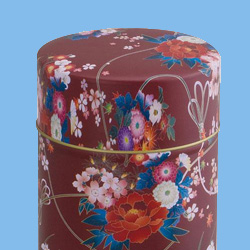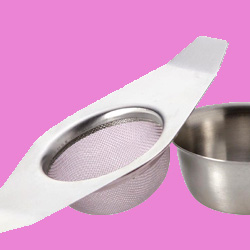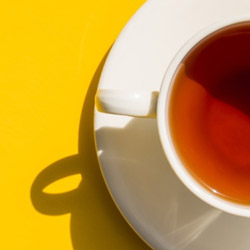From the East to the West

The Legend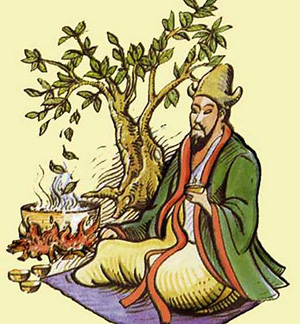
No one knows for sure when the first cup of tea was brewed but the most enduring myth surrounding the discovery of tea comes from 2737 BC when Chinese Emperor Shennong made the accidental discovery while boiling water in his garden. A leaf blew down from an overhanging branch of a wild tea tree and landed in the water as it boiled. The emperor, known for his scientific curiosity, chose to drink the water rather than discard it and enjoyed it so much that he felt compelled to begin researching the tea plant further and whereupon he discovered the medicinal properties of tea.
Whether you believe the legend or not we know that the tea plant originated in the south west region of China near the northern Indian border and was originally chewed by the locals for it's medicinal properties. Traders travelling throughout the area saw how popular the leaves were and began transporting the tea plants across China.
Widespread consumption of tea didn't become popular until the Tang dynasty of the 7th century and by the 10th century tea became such a popular drink that it was thought of as the national drink of China and the government imposed a tax on the sale of tea leaves.
During the latter part of the Tang dynasty Saichō, a Japanese Buddhist monk studying in China, transported seeds back to Japan with him in order to grow tea plants at his monastery. Other Buddhist monks visiting China also took seeds with them back to Japan and eventually many monasteries in Japan had their own small tea gardens however due to the remote locations of these monasteries tea didn't gain the widespread popularity in Japan that it had in China until several hundred years later.
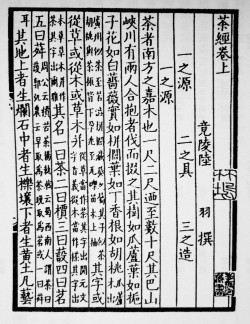 The romantic age of tea coincided with the Sung dynasty from the 10th to 13th centuries. During this period Chinese culture was heavily influenced by the tea drinking culture reaching into religion, art, theatre and politics throughout East Asia.
The romantic age of tea coincided with the Sung dynasty from the 10th to 13th centuries. During this period Chinese culture was heavily influenced by the tea drinking culture reaching into religion, art, theatre and politics throughout East Asia.
The current method of brewing tea by steeping the whole dried leaves in hot water didn't arise until the Ming Dynasty in the 14th century. Prior to this the leaves were dried, ground and compressed into blocks. The brewing process for these tea bricks involved simply breaking off clumps of tea and dropping them into hot water.
Following the shift in methodology a Chinese monk brought some of the new full leaf tea with him on a journey to Japan and upon seeing the new form Soen Nagatani, a tea merchant from Kyoto, invented his own method of steaming, drying and rolling tea. This new Japanese tea became known as Sencha and ultimately became the most popular form of tea in Japan.
It wasn't until the end of the 16th century that tea made its way from Asia to Europe. The first record of tea in the western hemisphere is attributed to a missionary from Portugal returning from China but it wasn't until several decades later that the first Dutch merchant ships began the tea trade. In 1610 the first ships containing tea from Japan and China were chartered by the Dutch East India Company. While these first shipments of tea were quickly disbursed to affluent European cities but the high price the tea commanded restricted it to the royal families and aristocrats.
Despite its current place in English society initially the English didn't warm towards tea. Coffee continued its dominance as the preferred drink in coffee houses which were popular with 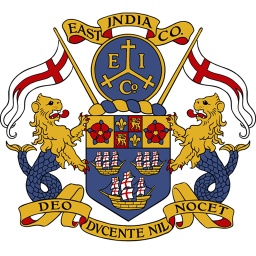 men. Tea slowly grew in popularity due to being the preferred drink of women. The first tea shop in London was opened by Thomas Garraway in 1657 selling tea direct to the public and began the slow rise in teas popularity throughout coffee shops and cafe's around London and spreading throughout Britain and overtaking coffee as the preferred drink of the masses.
men. Tea slowly grew in popularity due to being the preferred drink of women. The first tea shop in London was opened by Thomas Garraway in 1657 selling tea direct to the public and began the slow rise in teas popularity throughout coffee shops and cafe's around London and spreading throughout Britain and overtaking coffee as the preferred drink of the masses.
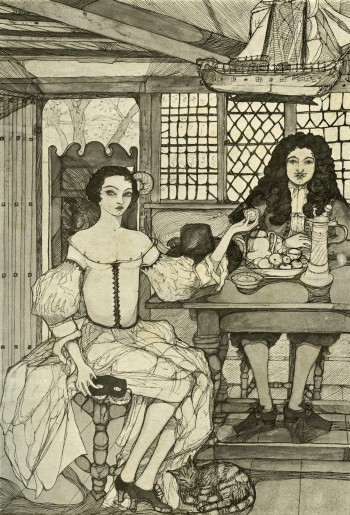 In 1662 King Charles 2nd of England married Portuguese royal Catherine of Braganza. The young princess was a tea lover and popularised the practise of tea time in the royal court. This further elevated Tea amongst the English and gave rise to the British East India Trade Company to compete directly with the Dutch company.
In 1662 King Charles 2nd of England married Portuguese royal Catherine of Braganza. The young princess was a tea lover and popularised the practise of tea time in the royal court. This further elevated Tea amongst the English and gave rise to the British East India Trade Company to compete directly with the Dutch company.
Concerned with the dominance of China in the tea trade an English botanist, Robert Fortune, was dispatched on a secret mission to expand tea growing into British controlled India. Fortune travelled through Chinese tea gardens learning the secret techniques for growing, harvesting and processing tea leaves.
Later a British Major, Robert Bruce, came upon naturally growing tea plants in the Assam region of India. Following this discovery The British East India Company took the opportunity to start commercial tea operations in Assam and in the mountainous region of Darjeeling. The teas grown in India proved as popular in England as those from China and allowing the west to stop their reliance on tea from China.
From its legendary discovery nearly 5,000 years ago until today tea has been popular with every culture it has come into contact with. Empires have risen and fallen, wars have been fought and fortunes made on the popularity of a leaf that fell into a cup. Tea is now the second most popular drink in the world after water and at Red Leaf Tea we continue the traditions that have been established for millennia sourcing the finest quality tea leaves from gardens that have existed for hundreds of years.

